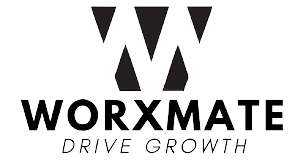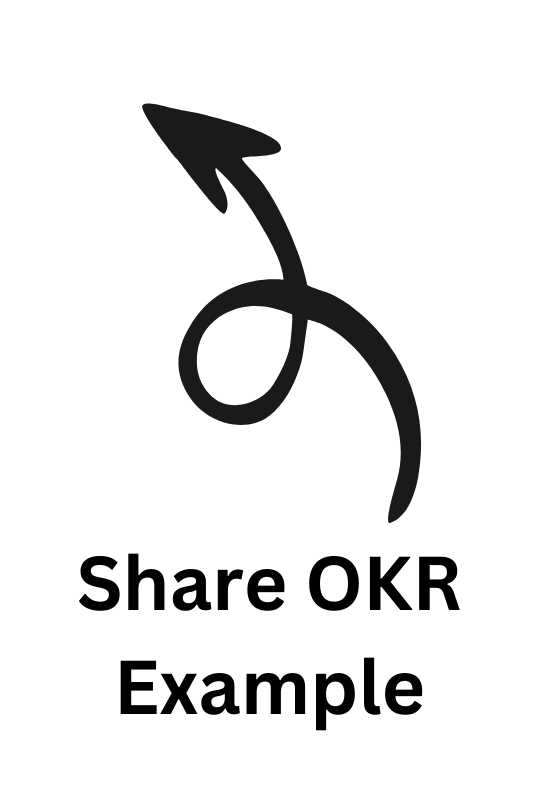Example 1
The goal is to implement a comprehensive digital learning platform to enhance employee skill development. This involves selecting and deploying a suitable Learning Management System (LMS), creating engaging digital content, and ensuring high adoption rates among employees.
Key results will include successfully launching the LMS, developing a library of digital learning resources, and achieving significant employee engagement with the platform.
Objective: Implement a Comprehensive Digital Learning Platform
Key Results:
- Key Result 1: Select and deploy a state-of-the-art Learning Management System (LMS) with 100% functionality within 3 months.
- Key Result 2: Develop and upload 50 high-quality, interactive digital learning modules covering key skill areas.
- Key Result 3: Achieve an 80% adoption rate among employees, with at least 70% completing one or more courses within the first 6 months.
Example 2
The goal is to enhance leadership development programs to build a strong pipeline of future leaders. This involves designing tailored leadership curricula, implementing mentoring programs, and providing opportunities for practical leadership experience. Key results will include launching new leadership development initiatives, increasing participation in leadership programs, and improving leadership competency scores across the organization.
Objective: Enhance Leadership Development Programs
Key Results:
- Key Result 1: Design and launch 3 new leadership development initiatives tailored to different organizational levels (emerging, mid-level, and senior leaders).
- Key Result 2: Increase participation in leadership programs by 50%, ensuring representation from all departments.
- Key Result 3: Improve overall leadership competency scores by 25% as measured by 360-degree feedback assessments.
Example 3
The goal is to implement a data-driven approach to learning and development. This involves setting up learning analytics systems, conducting regular skills gap analyses, and using data insights to inform L&D strategies. Key results will include implementing learning analytics tools, conducting organization-wide skills assessments, and improving the alignment of L&D initiatives with identified skill gaps.
Objective: Implement a Data-Driven Approach to Learning and Development
Key Results:
- Key Result 1: Implement a robust learning analytics system, integrating data from all L&D initiatives and achieving 95% data accuracy.
- Key Result 2: Conduct quarterly organization-wide skills gap analyses, with 100% department participation.
- Key Result 3: Improve the alignment of L&D initiatives with identified skill gaps by 40%, as measured by post-training assessments and manager feedback.
Example 4
The goal is to foster a culture of continuous learning within the organization. This involves promoting self-directed learning, recognizing and rewarding learning achievements, and integrating learning into daily work practices. Key results will include increasing employee-initiated learning activities, implementing a learning recognition program, and improving overall employee satisfaction with learning opportunities.
Objective: Foster a Culture of Continuous Learning
Key Results:
- Key Result 1: Increase employee-initiated learning activities by 50% through the promotion of self-directed learning resources and tools.
- Key Result 2: Implement a company-wide learning recognition program, acknowledging at least 100 employees for significant learning achievements quarterly.
- Key Result 3: Improve employee satisfaction with learning opportunities by 30%, as measured by annual engagement surveys.
Example 5
The goal is to enhance the effectiveness of onboarding programs to improve new employee integration and productivity. This involves redesigning the onboarding curriculum, implementing a buddy system, and creating role-specific learning paths. Key results will include reducing time-to-productivity for new hires, improving retention rates of new employees, and increasing satisfaction scores for the onboarding process.
Objective: Enhance Effectiveness of Onboarding Programs
Key Results:
- Key Result 1: Redesign and implement a comprehensive onboarding curriculum that reduces average time-to-productivity for new hires by 25%.
- Key Result 2: Implement a company-wide buddy system for new hires, achieving 90% participation and improving 90-day retention rates by 15%.
- Key Result 3: Increase new hire satisfaction scores for the onboarding process by 40% through the creation of personalized, role-specific learning paths.
Example 6
The goal is to leverage emerging technologies to enhance learning experiences. This involves implementing virtual and augmented reality training modules, developing AI-powered personalized learning paths, and creating gamified learning experiences. Key results will include launching innovative training modules, improving learner engagement rates, and enhancing skill acquisition through technology-enabled learning.
Objective: Leverage Emerging Technologies to Enhance Learning Experiences
Key Results:
- Key Result 1: Develop and launch 5 virtual or augmented reality training modules for high-priority skill areas.
- Key Result 2: Implement AI-powered personalized learning paths for 80% of employees, improving course completion rates by 35%.
- Key Result 3: Create 10 gamified learning experiences, increasing learner engagement rates by 50% and improving skill acquisition scores by 25%.
Example 7
The goal is to align L&D initiatives with strategic business objectives. This involves collaborating with business leaders to identify critical skills, developing targeted learning programs, and measuring the impact of L&D on business outcomes. Key results will include increasing the alignment of learning programs with business goals, improving the perceived value of L&D among leadership, and demonstrating tangible business impact from learning initiatives.
Objective: Align L&D Initiatives with Strategic Business Objectives
Key Results:
- Key Result 1: Conduct quarterly meetings with business leaders from all departments to identify and prioritize critical skills, achieving 100% participation.
- Key Result 2: Develop and implement 5 targeted learning programs directly tied to key business objectives, as identified in collaboration with leadership.
- Key Result 3: Demonstrate a 20% improvement in specific business KPIs (e.g., productivity, quality, customer satisfaction) directly attributable to L&D initiatives.
Example 8
The goal is to enhance cross-functional collaboration and knowledge sharing within the organization. This involves implementing knowledge management systems, facilitating cross-departmental learning sessions, and creating communities of practice. Key results will include launching a company-wide knowledge sharing platform, increasing participation in cross-functional learning activities, and improving employee perceptions of collaborative learning.
Objective: Enhance Cross-Functional Collaboration and Knowledge Sharing
Key Results:
- Key Result 1: Implement a company-wide knowledge management system with 85% employee adoption rate within 6 months.
- Key Result 2: Facilitate 20 cross-departmental learning sessions, ensuring participation from at least 5 different departments in each session.
- Key Result 3: Establish 10 active communities of practice around key skill areas, with at least 50 members each and 70% reporting improved knowledge sharing.
Example 9
The goal is to develop a comprehensive skills framework to support career development and succession planning. This involves creating detailed skill matrices for all roles, implementing skills assessment tools, and developing targeted learning paths for career progression. Key results will include completing skill matrices for all departments, conducting organization-wide skills assessments, and increasing internal promotions through targeted skill development.
Objective: Develop a Comprehensive Skills Framework for Career Development
Key Results:
- Key Result 1: Create and validate detailed skill matrices for 100% of roles across all departments.
- Key Result 2: Implement skills assessment tools and conduct baseline evaluations for 90% of employees.
- Key Result 3: Develop personalized learning paths for identified high-potential employees, resulting in a 30% increase in internal promotions.
Example 10
The goal is to improve the measurement and reporting of L&D impact on business performance. This involves implementing advanced learning analytics tools, developing comprehensive L&D scorecards, and conducting regular impact assessments. Key results will include enhancing the ability to measure learning effectiveness, improving the quality of L&D reporting to leadership, and demonstrating clear ROI for major learning initiatives.
Objective: Improve Measurement and Reporting of L&D Impact
Key Results:
- Key Result 1: Implement advanced learning analytics tools that can measure and report on learning effectiveness across 100% of L&D programs.
- Key Result 2: Develop a comprehensive L&D scorecard that aligns with business KPIs, providing monthly updates to leadership with 95% accuracy.
- Key Result 3: Conduct ROI assessments for all major
Looking to elevate your organization’s growth? Discover how Worxmate’s OKR Software can streamline your goal-setting and performance tracking.
Try a Demo Today and See the Difference!



